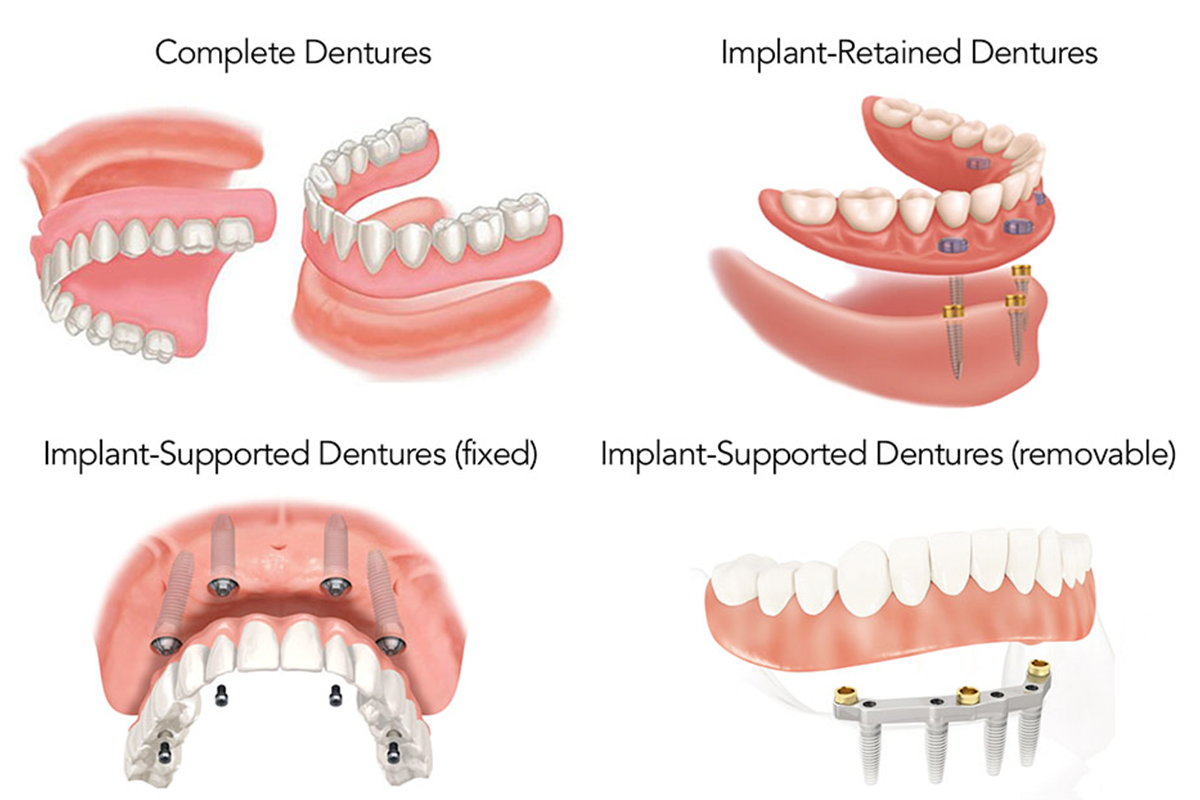False teeth, commonly referred to as dentures, are prosthetic devices designed to replace lost teeth. They are held in place by the surrounding hard and soft tissues of the oral cavity. Traditional dentures can be taken out.
There are a variety of denture designs, some of which rely on bonding to or clasping onto dental implants or natural teeth. Dentures can be divided into two main groups depending on whether they are used to fill gaps in the mandibular or maxillary arches.
THE PROCESS OF GETTING DENTURES BEFORE AND AFTER
- The dentist in London Ontario will take an impression of your teeth using dental putty or digital tools after ensuring that your teeth and gums are healthy.
- Before denture, a wax model made from the imprint determines the fit and aesthetics of future dentures.
- Before making the actual dentures, modifications and alterations are done to the model prosthesis.
- The final dentures are then made and put into the mouth after the model is finished. When necessary, final changes are done.
TAKING CARE OF AFTER DENTURES:
- Before and After dentures patients are strongly advised to properly care for the teeth and gums once the dentures are in place.
- The dentures, gums, and tongue must be brushed twice daily, just like natural teeth. Regular flossing is also necessary to get rid of material accumulation between teeth.
- Plaque accumulation can still result in gum issues and poor breath even though false teeth are not susceptible to decay.
- Due to regular wear, dentures may eventually require relining, rebasing, or remaking.
- For your dentist to regularly assess the fit of the dentures and look for signs of dental disorders, it is also essential that you visit the dentist every six months.
HOW TO CLEAN DENTURES?
All dentures, regardless of the type, need to be cleaned daily, just like natural teeth. Dentures may be built of artificial teeth, but germs, plaque, and tartar can still accumulate on them and damage neighboring teeth and gums.
- Take your dentures out of your mouth and wash them thoroughly to remove any food particles lodged between your teeth, along the gum line, or even beneath the device.
- Then, brush the dentures all over using a soft toothbrush or denture brush and a light soap or denture cleanser. Avoid using other cleaners, ordinary toothpaste, and electric toothbrushes to avoid damaging and wearing away denture materials. Make sure to thoroughly rinse them after cleaning.
- Be sure to brush your gums and natural teeth with a very soft, wet toothbrush and fluoridated toothpaste, if necessary, while your dentures are out of your mouth.
- If your toothbrush is too harsh, gently rub your gums by wrapping your finger in a wet, soft washcloth and rubbing all areas.
TYPES OF DENTURES:
Dentures come in a wide variety of shapes. They are available in permanent and removable forms.
1. COMPLETE DENTURES
Full dentures are another name for complete dentures. They serve as complete tooth replacements. Before advising full dentures, most dentists will attempt to save at least some natural teeth. But after all other choices have been exhausted, complete dentures are frequently required.
2. PARTIALLY FIXED DENTURES (IMPLANT-SUPPORTED BRIDGE)
The term “implant-supported bridges” also applies to fixed partial dentures (FPD). FPDs use two dental implants and a prosthetic tooth or teeth to replace a few lost teeth in a row. They are screwed or permanently cemented into the mouth.
3. EASILY REMOVED PARTIAL DENTURES
Only a few lost teeth in your upper or lower jaw can be replaced with removable partial dentures (RPD). RPDs are easily replaceable and can be taken out at any moment. They can make teeth appear, feel, and perform more as they would naturally.
4. DENTURES WITH IMPLANTS (OVERDENTURES)
Dental implants hold an overdenture, also known as an implant-supported denture, on top of your gums. Most overdentures require at least four implants to stay in place. However, this is not always the case. You can also use overdentures in the upper jaw, lower jaw, or both.
5. INSTANT DENTURES
You must wait at least 6 to 8 weeks after having all of your teeth removed before getting regular dentures fitted. This provides enough time for your mouth to heal.
6. DENTURES WITH ALL-ON-4 IMPLANTS
Patients who require a full set of dentures can consider All-On-4 implant dentures. They use four dental implants to replace every missing tooth in the upper and lower jaws. You cannot remove the denture; however, your dentist can.

BENEFITS OF DENTURES:
Dentures can offer you a full set of fully functional teeth that can restore your appearance and create an aesthetically attractive appearance for a fraction of the cost of implants.
They provide at least three key benefits:
Cosmetic benefits: Dentures replace lost teeth, supporting facial structure and preventing additional tooth movement. Dentures can restore the definition to your cheek and mouth, bring your smile back, and help you look younger.
Functional benefits: Patients who wear dentures can improve their speech, communication, and oral function to the fullest extent possible.
Affordable price: The best option for replacing missing teeth is still affordable dentures. Modern dentures are more advanced, natural-looking, and comfortable to wear than older, more conventional dentures.
DISADVANTAGES OF DENTURES AND SOME ALTERNATIVES:
Dentures have certain drawbacks, despite all the advantages of replacing missing teeth that have already been described.
The following are some frequently mentioned disadvantages of dentures:
- Eating or chewing difficult foods, such as sticky or crunchy foods.
- Maintenance and cleaning are inconvenient; dentures must occasionally be removed and immersed in the cleaning solution.
- There may be some speaking or word-specific discomfort, but this will pass as you grow used to the dentures.











